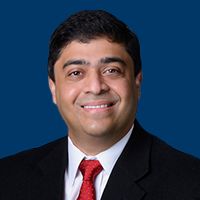Video
Dr. Maris on Key Results From the OUTREACH Trial of Liso-cel in DLBCL
Author(s):
Michael Maris, MD, discusses key efficacy and safety data from the phase 2 OUTREACH trial in diffuse large B-cell lymphoma.
Michael Maris, MD, member physician, director of research, Colorado Blood Cancer Institute, partner, Sarah Cannon Research Institute, discusses key efficacy and safety data from the phase 2 OUTREACH trial (NCT03744676) in diffuse large B-cell lymphoma (DLBCL).
The non-randomized trial assessed the administration of lisocabtagene maraleucel (liso-cel; Breyanzi) in patients with relapsed/refractory PET-positive DLBCL across both outpatient and inpatient community centers in the United States, Maris begins. Outpatient vs inpatient monitoring was chosen according to investigator discretion, he continues. Individual factors contributing to this decision included the patient’s severity of disease, high-risk status, and need for bridging chemotherapy. The study’s primary end points were incidence of grade 3 or higher cytokine release syndrome (CRS), neurological events (NEs), prolonged cytopenias, and infections. Secondary end points included safety, overall response rate (ORR), and complete response (CR) rate.
A primary analysis of the study was presented at the 2022 ASH Annual Meeting and showed that treatment with liso-cel led to high clinical activity and a manageable toxicity profile regardless of outpatient or inpatient administration and prior stem cell transplantation. The ORR for all patients was 80%, with a CR rate of 52%. Individual characteristics such as a patient's severity of disease and level of toxicity did predict potentially lower responses, but responses were generally encouraging given patients’ sickness and advanced stage of disease, Maris notes.
Moreover, no prohibitive safety signals emerged from this trial regarding the administration of this product in a community setting, Maris continues. The toxicity profile for liso-cel was as expected, with a comparable frequency of CRS and NE events across settings. Similarly, the use of tocilizumab (Actemra) and steroids for CRS and NEs was consistent with prior expectations, Maris states.
These results indicate that patients were successfully treated with liso-cel and monitored in the community setting.









